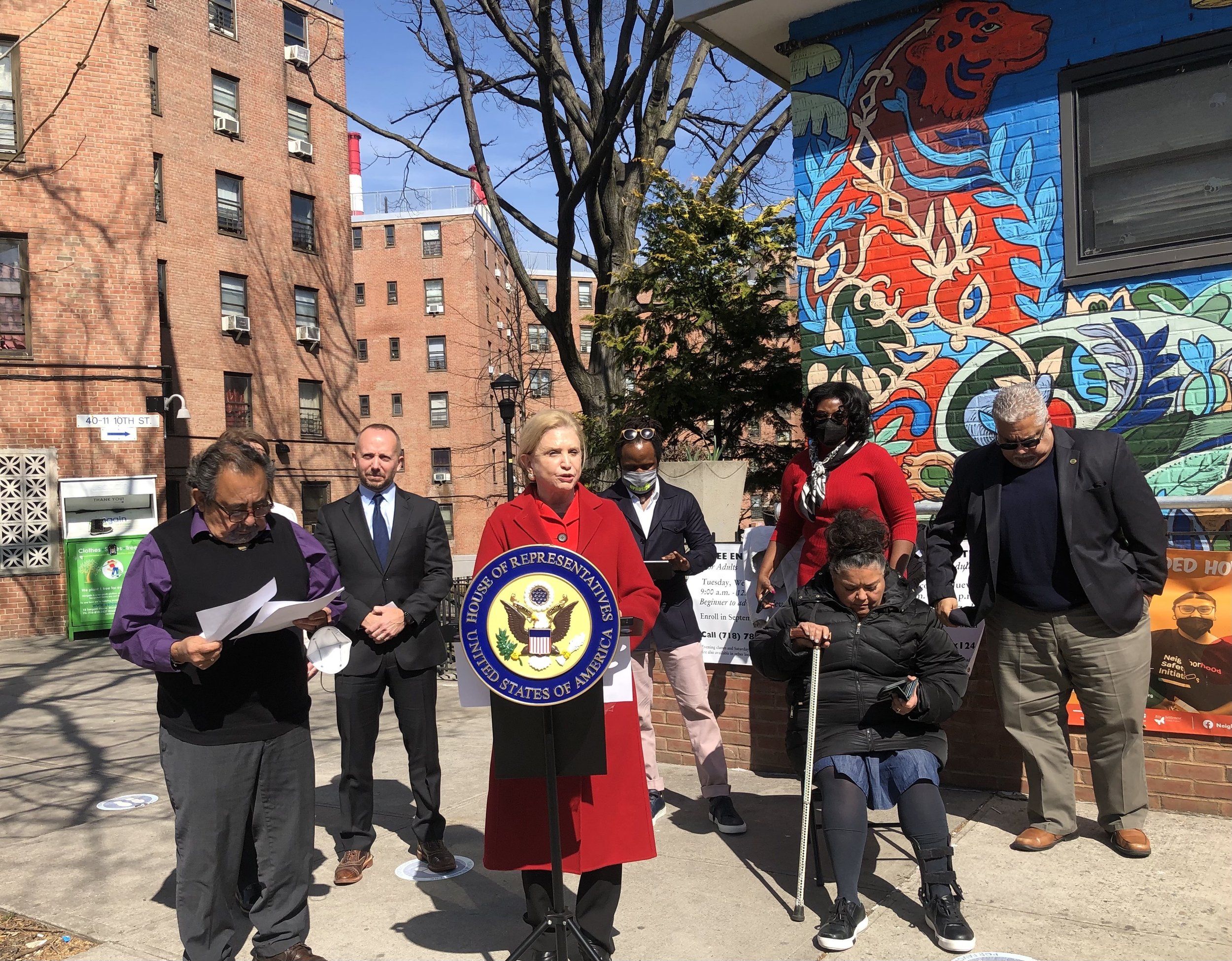Lawmakers urge clean energy investment in Queens
/U.S. Rep. Carolyn Maloney began a two day environmental justice tour with a roundtable in Queensbridge of local leaders on Friday, March 11, 2022. Eagle photo by Rachel Vick
By Rachel Vick
Federal legislators and local environmental justice leaders gathered Friday to discuss the future of green policies in Queens - and how they can best serve the communities most impacted by policies of the past.
U.S. Reps. Carolyn B. Maloney and Raúl Grijalva, from Arizona, joined Borough President Donovan Richards and advocates from across the city at Queensbridge Houses to discuss ways to improve resilience, clean energy and equity as efforts to meet federal and state climate goals continue.
The New York City Housing Authority Complex sitting under the shadow of the Ravenswood Generating Station is the largest public housing complex in the country, and one of several NYCHA complexes in the area heavily affected by air pollution.
“It's no accident,” said Maloney, who recently introduced a bill to limit the creation of new fossil fuel-powered plants. “These were deliberate decisions to concentrate pollution in communities already carrying the burdens of injustice and chronic disinvestment, now we're making the deliberate decision that this must change.”
“We are with you,” she told the advocates. “We don't want a benefit model, we want direct investment.”
The peaker plant — which helps the city meet energy needs during high use periods — is often used to exemplify the environmental justice issues faced by residents of the area dubbed Asthma Alley for its higher-than-average rates, but advocates say the wide ranging impacts of systemic racism need solutions to scale.
Elizabeth Yeampierre, the executive director of UPROSE, said that the conversation is more important than ever on the heels of a pandemic that disproportionately impacted Black and Latino New Yorkers. The Environmental Justice For All Act, she said “gives [BIPOC communities] the opportunity to fight for our right to breathe.”
In addition to CO2, fossil fuel-powered plants emit other greenhouse gasses and particulate matter that contribute to air pollution and have been linked to the severity of COVID-19 symptoms. Small particulate matter can increase the chance of death from COVID-19 by at least 8 percent if inhaled regularly, according to a study from Harvard University.
“We are the ones who lost families to COVID; we knew the people in our families would die because they were living next to pollution, next to toxic exposure in the midst of power plants that were sited because people thought they could, because they believed that we were powerless,” Yeampierre said. “Today… we’re walking in our power, we have legislators standing with us.”
New York is not immune to the impacts of climate change, and low income neighborhoods already disproportionately impacted by issues like urban heat effect, will likely see those issues exacerbated in the next few years.
An inclusive approach to environmental justice is essential, saids Richards, who called for the installation of clean energy technology to save energy and costs.
“We know too well the impacts of climate change and how catastrophic it can be,” he said. “It's not just severe storms that threaten our lives in Queens. We stood up as one community to stand up to oppose NRG… and we won that battle here in Queens so to all of you who think there is nothing we can do to stop fossil fuel giants from polluting our environment and endangering our families, I will tell you to look to Queens as an example.”
Anthony Karefa Rogers-Wright, the director of environmental justice with New York Lawyers for the Public Interest, drew parallels between the nation’s earliest unfulfilled promises after slavery was abilished and the federal initiatives to center impacted communities. The answer, he said, comes in the form of direct investment that allows individuals from the communities on the ground to choose what a benefit actually is.
Under the Justice 40 initiative from President Joe Biden, at least 40 percent of benefits of climate and clean energy spending would go to affected communities.
“Mark Twain once remarked, ‘History may not repeat itself but it often rhymes,’ but we are in a moment of climate calamity, atmospheric violence and peak environmental racism when we must, in the words of Queens heroes a Tribe Called Quest ‘Check the rhyme,’” Rogers-Wright said. “We must not allow Justice 40 to become the new 40 acres and mule.”
The group also stopped by the Ravenswood Generating station, managed by Rise Light and Power, to discuss the future of clean energy for the borough.
Though their proposal to build the Catskills Renewable Connector was passed over in favor of the Champlain Hudson Power project — to transport hydropower from the northernmost parts of the state into New York City — efforts to decarbonize the plant continue.
Closing Big Allis, a nickname for the generating plant, is a move community members have been waiting for with bated breath, both for themselves and for future generations.
“People say, ‘Oh, children out of Astoria houses are failing,’ but you don’t know the reason why; they’re sick,” said former President of the Astoria Houses Tenant Association Claudia Coger. “These are the things people don’t look at that bring poverty into the neighborhood, but it is very real. I just want to be able to see when those peaks come out.”




